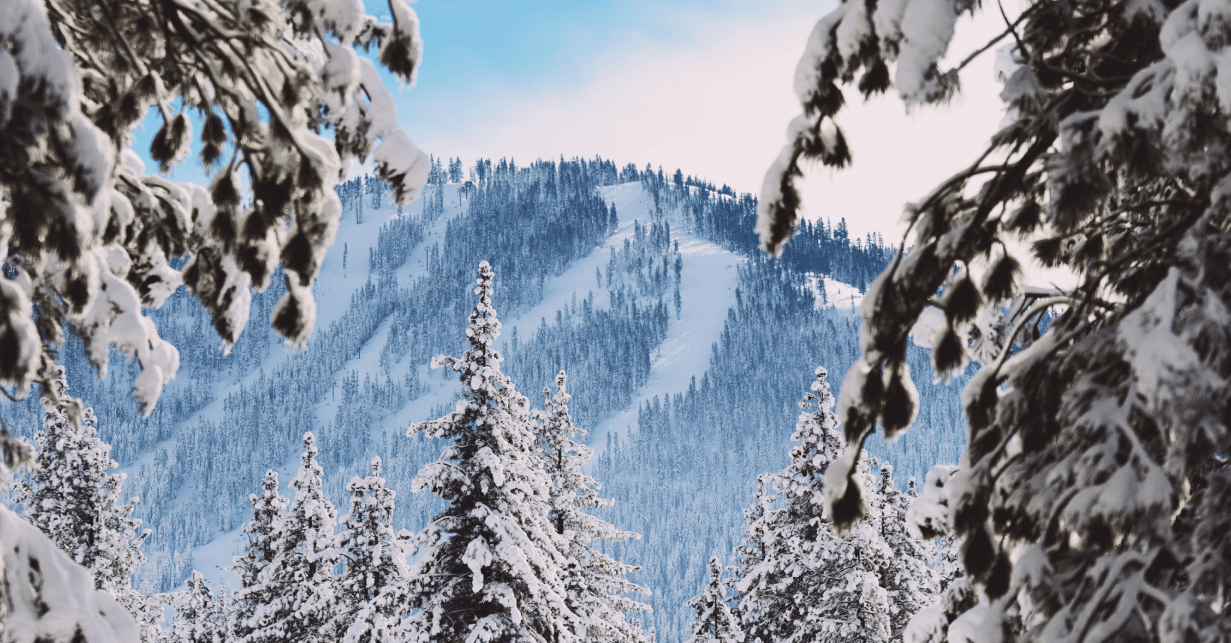

 Stacey Mullen
Stacey Mullen
Mar 12, 2024
Mother Nature finally revealed her generous side in February by dumping considerable amounts of snow across most western U.S. ski resorts and turned what had been a bit of a nail-biting season into one that is now nipping at the heels of last year’s record. Details on the striking turnaround were released yesterday by DestiMetrics,* the Business Intelligence division of Inntopia, in their monthly Market Briefing. Among other notable benefits of the improved slope conditions, the booking pace increased for the first time in four months, daily rates were mostly steady, and revenue deficits eased for the first time in seven months.
February claws back some lost ground
Occupancy for the month of February was down 3.4 percent compared to one year ago at this time—but marks a healthy improvement from just one month ago when on-the-books occupancy for the month was down more than six percent. The Average Daily Rate (ADR) was up 2.2 percent and when coupled with the decline in occupancy, led to a 1.3 percent decline in aggregated revenue compared to last February.
When looking back to February 2020—a few weeks before the onset of the pandemic, occupancy for the month was down a scant 0.6 percent while daily rates were up a dramatic 45.1 percent to yield an aggregated 44.2 percent increase in revenue.
Widespread snow helped elevate full winter season
At the end of January, occupancy for the full winter season from November through April was down 5.9 percent but as of Feb. 29, that decline captured some lost ground to reach a four percent deficit. The ADR for winter continues to maintain its strength—up 2.7 percent for the full season with gains being posted in four of the six months. Only December and April are declining—a slight 1.2 percent for December and 6.8 percent for April. March is still showing the greatest increase—up 6.9 percent over one year ago.
The contrast to four years ago at this time is similar to the monthly results. Winter occupancy is down a slight 0.3 percent but on-the-books ADR is continuing with its incredible strength—up 41.7 percent for the season with increases in all six months.
“As the snow came in, so did the good news for lodging properties throughout the western US,” enthused Tom Foley, senior vice president for Business Intelligence at Inntopia. “We recorded a positive booking pace for the first time since September and with rates essentially holding strong, that translated into $89 million in bookings during February—powering the first year-over-year revenue gain in six months.”
In addition to giving the month of February a needed boost, bookings made in February for arrivals in the six months from February through July also rose—up by 5.7 percentage points for the six months through July.
“That translates to a very strong 22.8 percent gain in booking pace compared to February last year,” continued Foley. This is the first gain in booking pace since September and the strongest since May and is a classic illustration of what pent-up demand looks like when it is the weather, not a pandemic, that is holding people back,” he added.
Strong and steady economic indicators continue to rule
For the fourth consecutive month, the Dow Jones Industrial Average (DJIA) rose by adding 846.1 points or 2.2 percent and marks the third consecutive month to close with a record high. A strong Gross Domestic Product (GDP) report, stable earnings, and rising consumer confidence all contributed to the rise along with decreasing fears of a recession later in the year. On the less rosy side of the equation, concern about overly optimistic hopes about the markets, the threat of sustained high interest rates, ongoing war in both the Middle East and Ukraine, and concerns about the potential for China’s soft economy to put pressure on the US are all variables casting some shadow over economic forecasts.
In contrast with Wall Street news, the Consumer Confidence Index (CCI) and the Consumer Sentiment Index (CSI) from the University of Michigan both declined in February. The CCI was down 3.8 percent and when combined with the sharp downward adjustment for the January figures, left the index just 1.6 points higher than its 24-month average of 105.1 points–but is up 3.2 percent compared to last February.
The decline in the CSI was more modest by losing 2.1 points to finish at 76.9 points. With the exception of concerns about long-term inflation which drove most of the drop, most measures were stable, or even slightly higher than last month.
“The current boom on Wall Street is showing up in savings accounts and even though confidence slipped a bit during February, enhanced IRA and401(k) accounts are encouraging spending on discretionary purchases such as travel,” offered Foley. “But that shakiness that appeared in the CCI report this month is noteworthy heading into the summer travel season.”
The National Unemployment Rate rose to 3.9 percent as employers added a strong 275,000 new jobs during February although job numbers were revised downward by 43,000 for December and 124,000 for January. The increase marks the highest unemployment level since January 2022. Leisure and Hospitality claimed 17,000 of those positions but only 1,900 were offered in the Accommodations sub-sector.
Watching…..
*Snowfall: Although the snow base remains somewhat below seasonal averages at many western resorts, conditions are considerably better than one month ago and the appreciably better snow along with strong economic conditions combined to deliver a very effective “one-two punch” for lodging properties.
*Winter occupancy: Although still down compared to last year at this time, the improvement over one month ago is striking. After months of losing ground in year-over-year comparisons, occupancy moved from a seasonal 5.9 percent deficit at the end of January to a four percent deficit by the end of February and marks the first improvement for the winter season since last August.
*Average Daily Rate (ADR): Absolute rates came down very slightly from an average of $623/night as of Jan. 31 to $618/night as of Feb. 29 and in conjunction with the snowfall, drove enough additional to occupancy to improve higher revenues for the month—despite the lower rates.
*Property Tiers: Economy properties (ADR up to $400/night) finally improved during February for the first time this season as they had the capacity and lower rates to capture many of the additional bookings. And that increased occupancy improved their revenues for the month. Moderate properties ($401 to $850/night) experienced little change during the month with a scant 0.4 percent drop in rate and an equally scant 0.2 percent increase in February occupancy. Luxury properties ($851/night and up) recorded a 1.1 percent decrease in year-over-year ADR but did get a boost from the February booking boom to pick up 0.9 percent in occupancy for the month.
“February snow sparked a turnaround in a winter season that was looking to be pretty disappointing just one month ago,” noted Foley. “We saw the largest increase in booking pace since last May drive increased bookings for the next six months but especially for February and March. Even April, which has been up-and-down since December, picked up some bookings with hopes for the potential of an extended season in some locations,” he concluded.
Have a question? Just ask.

Tyler Maynard
SVP of Business Development
Ski / Golf / Destination Research
Schedule a Call with Tyler→

Doug Kellogg
Director of Business Development
Hospitality / Attractions
Schedule a Call with Doug→
If you're a current Inntopia customer, contact support directly for the quickest response →
Request Demo
A member of our team will get back to you ASAP to schedule a convenient time.



